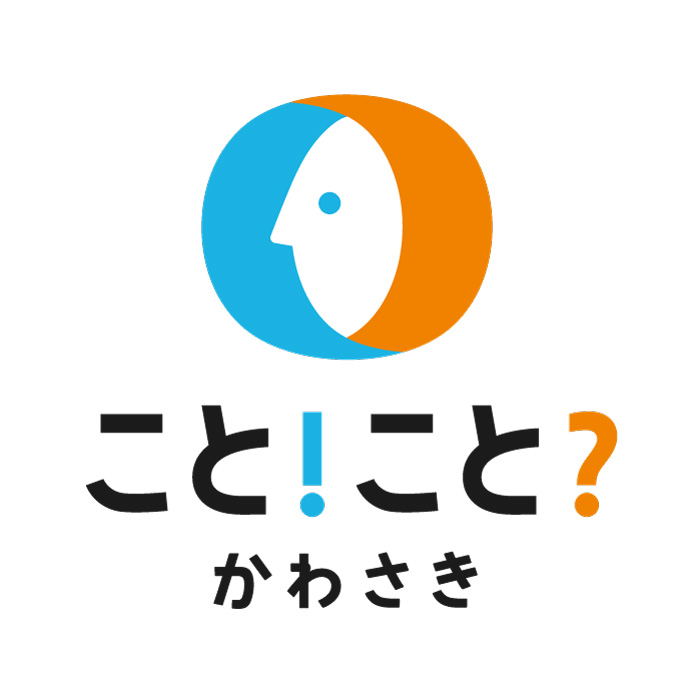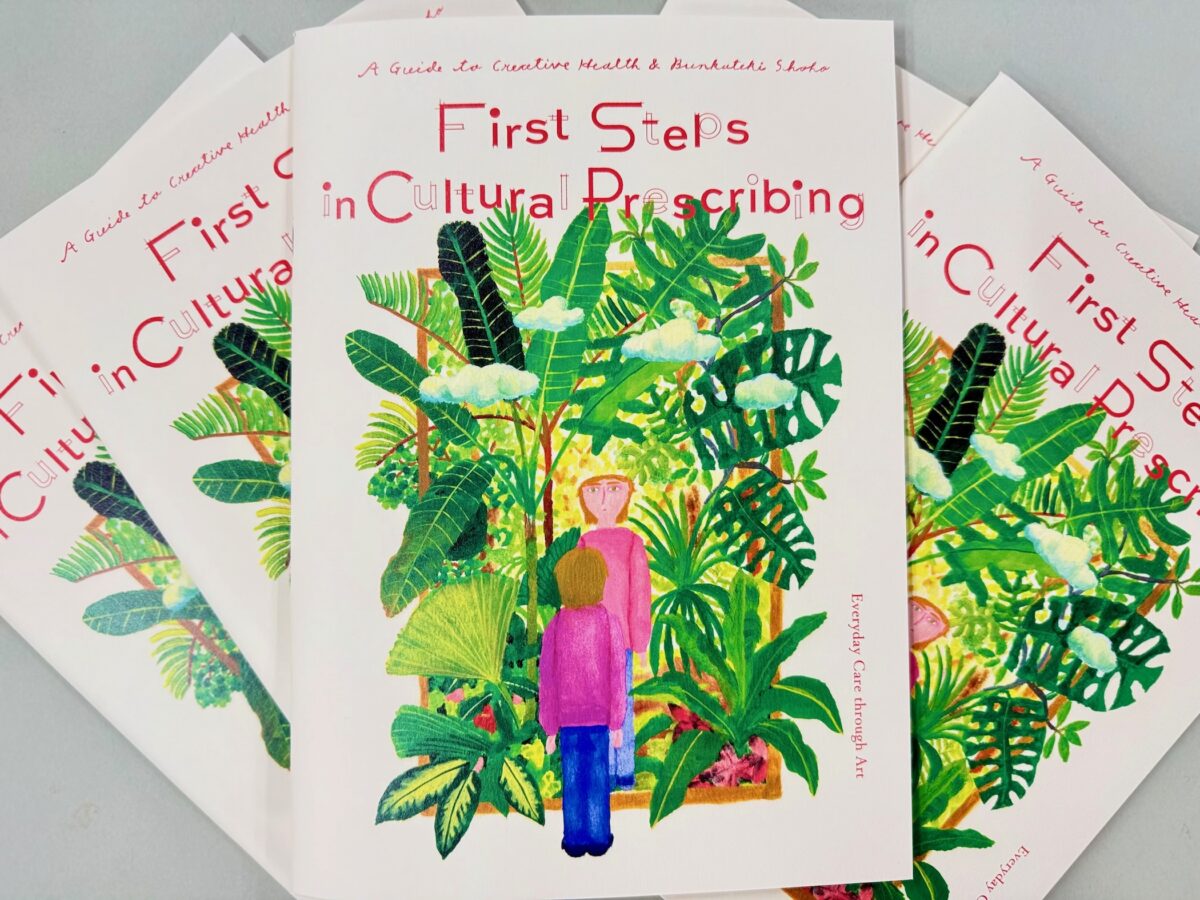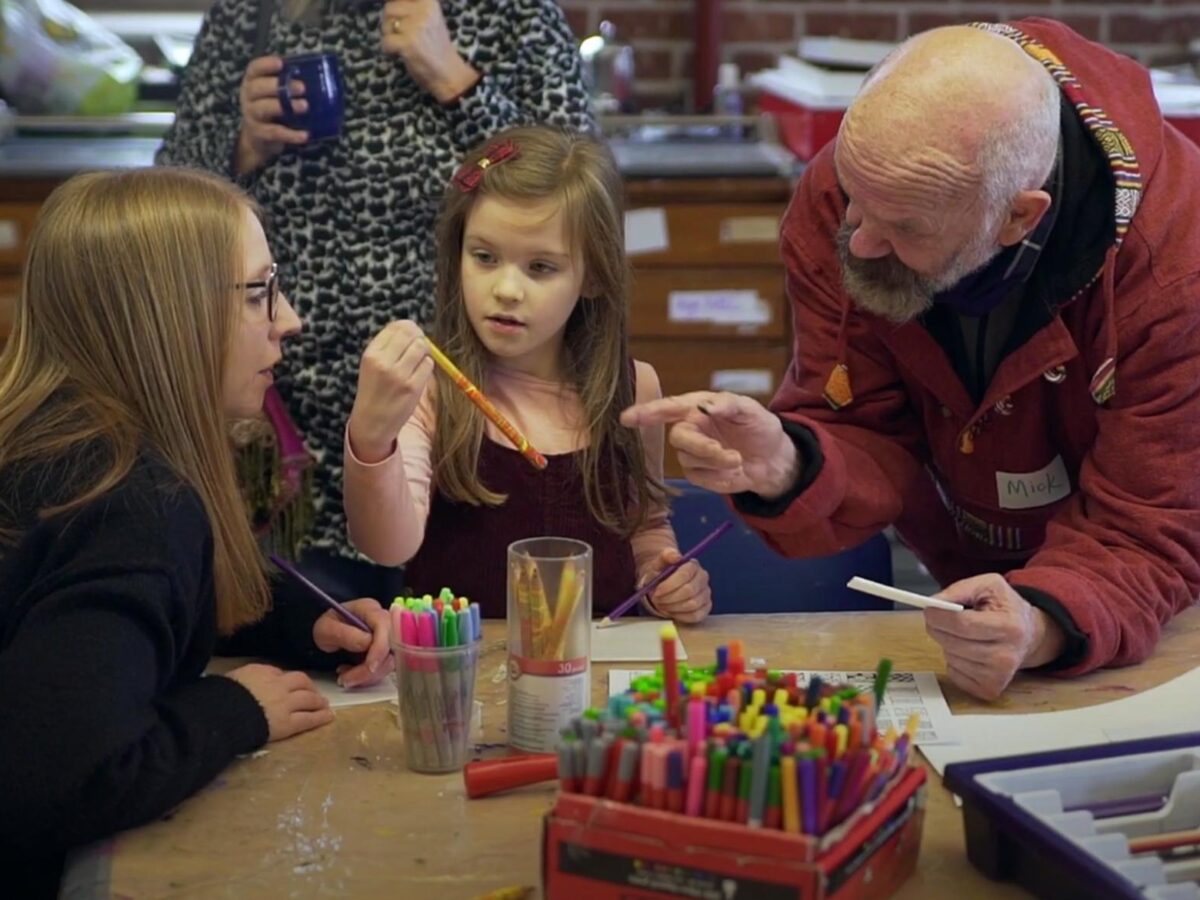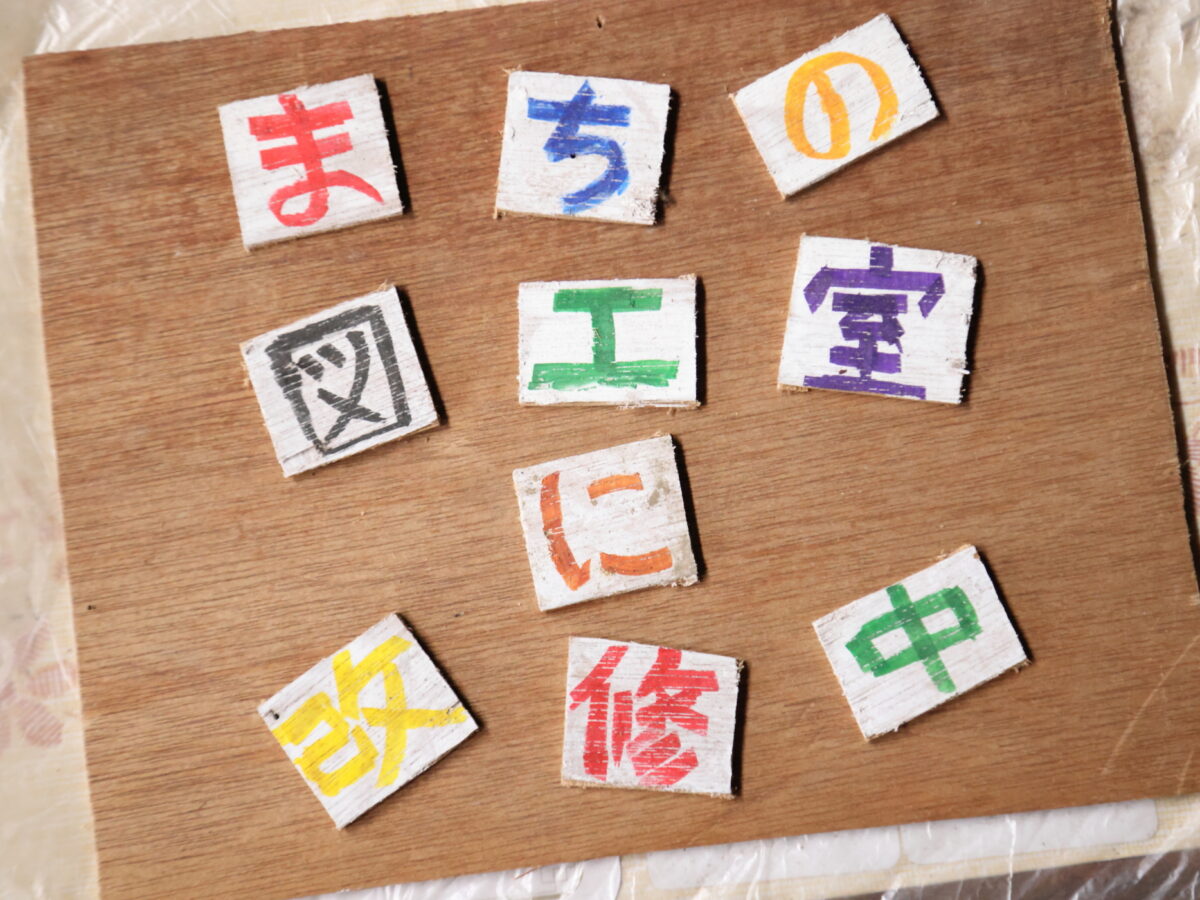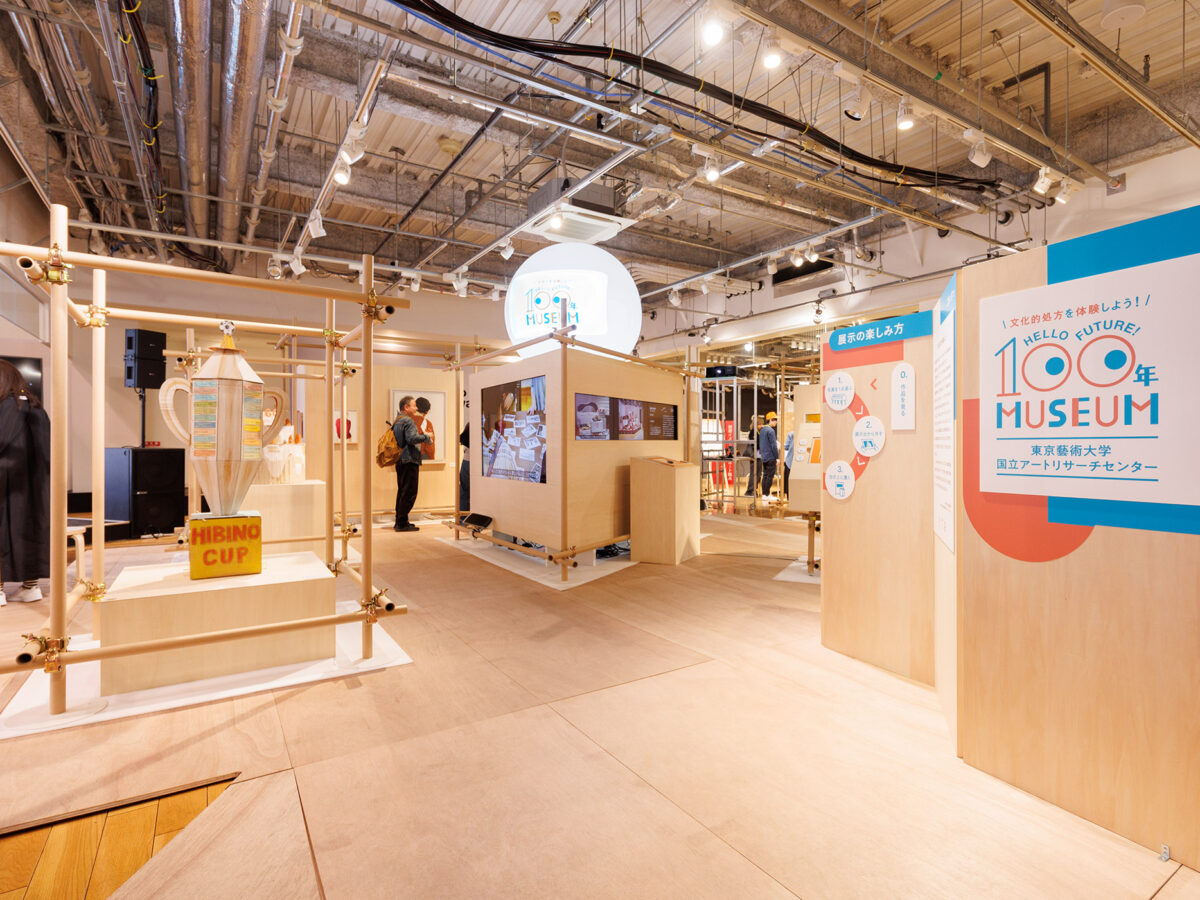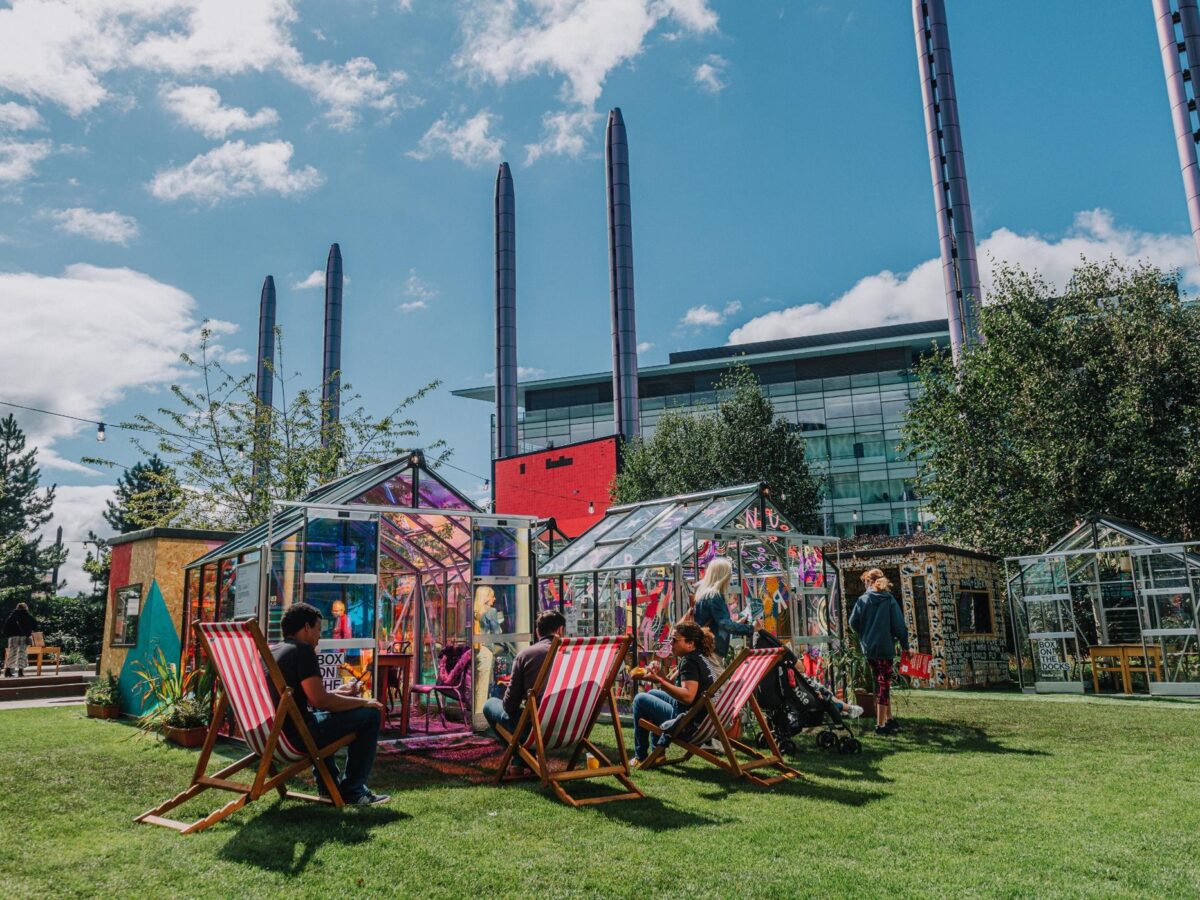
What is “Koto! Koto? Kawasaki”? In addition to operating ”aatomo,” the “COI-NEXT Arts-based Communication Platform for Co-Creation to Build a Convivial Society” (hereafter “Art-based Platform for Co-Creation”) is engaged in various projects that use art and cultural activities to address loneliness and social isolation. One of the key locations for the ART Co-Creation Hub’s activities is […]
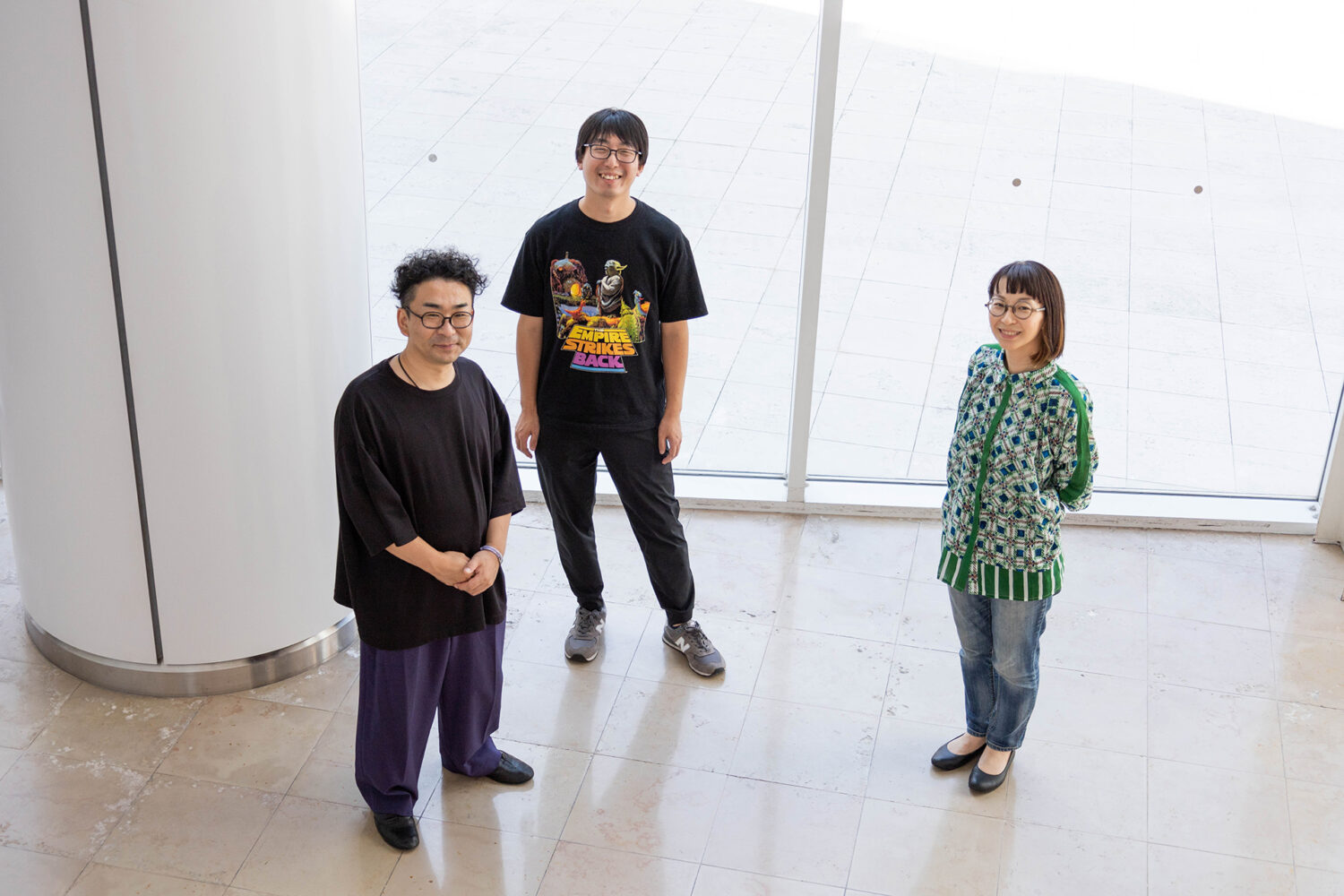
What is “Koto! Koto? Kawasaki”?
In addition to operating ”aatomo,” the “COI-NEXT Arts-based Communication Platform for Co-Creation to Build a Convivial Society” (hereafter “Art-based Platform for Co-Creation”) is engaged in various projects that use art and cultural activities to address loneliness and social isolation.
One of the key locations for the ART Co-Creation Hub’s activities is Kawasaki City, Kanagawa Prefecture. In Kawasaki, the city has been promoting the Art for All initiative, which aims to realize diversity and social inclusion while addressing various regional social issues. This is achieved by creating an environment where everyone can participate in local cultural activities and engage with the city’s artistic resources, such as museums. As part of this initiative, the ART Co-Creation Hub and Kawasaki City have collaborated to launch the project “Koto! Koto? Kawasaki.”
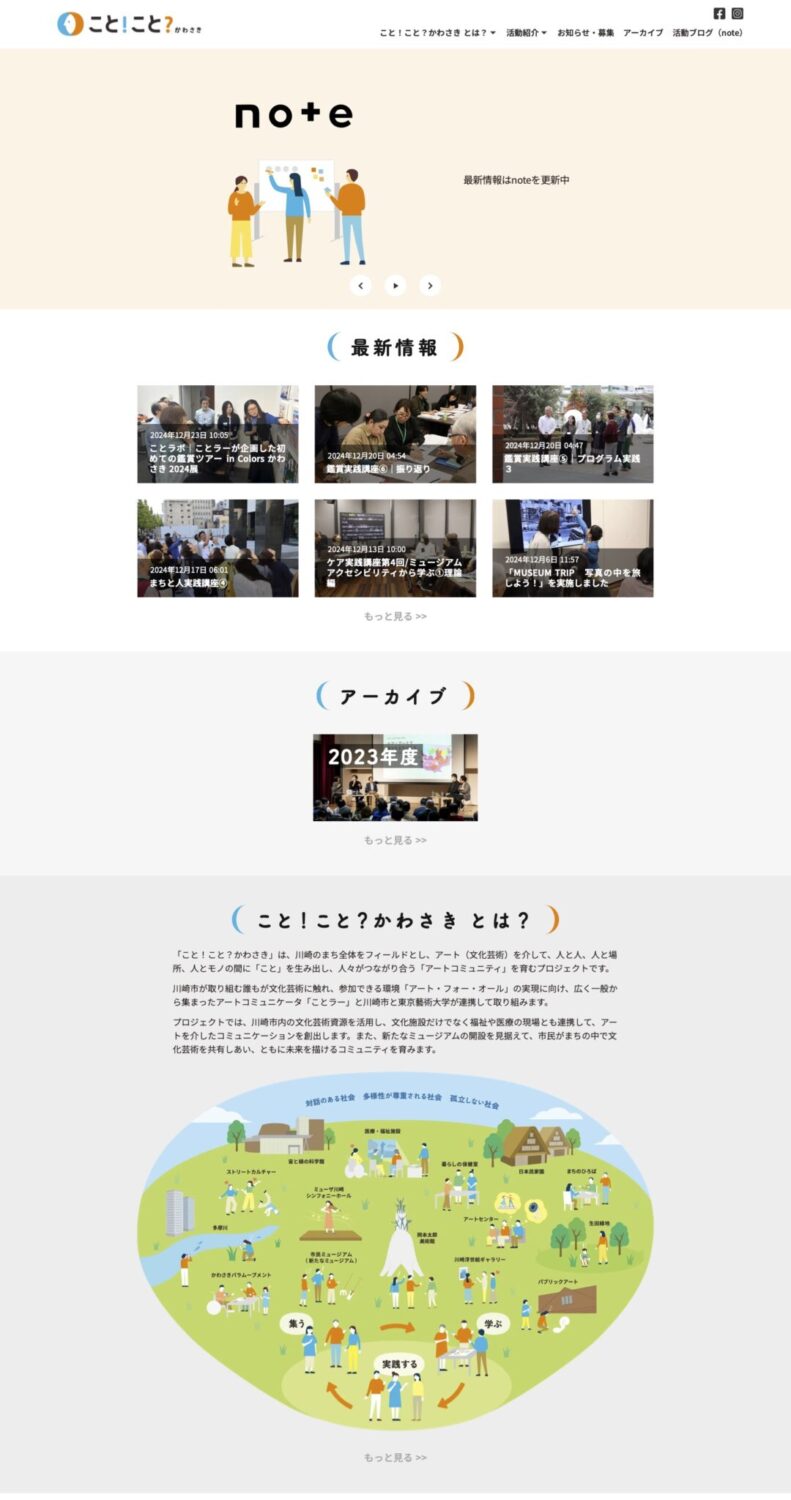
However, the main focus of “Koto! Koto? Kawasaki” is neither the Art-based Platform for Co-Creation nor Kawasaki City. The heroes of this project are local people. Residents take on the role of art communicators, known as Kotora, and work to connect the art and culture of this city with the people who live here, collaborating with the medical and welfare sectors as well. The “Koto! Koto? Kawasaki” project began in April 2024.
Detailed information about these activities is also available on the “Koto! Koto? Kawasaki” website (Japanese only). Art-based Platform for Co-Creation and Kawasaki City aim to create a space where Kotora, “connectors” of the city, people, and culture, can take action. By working alongside them, they hope to co-create cultural activities deeply rooted in Kawasaki.
Three project managers: Ms. Noriko Kondo, Mr. Makoto Tamaoki, and Mr. Shogo Takarada work for “Koto! Koto? Kawasaki.” When we spoke with them, we found that each of them has a unique background. We interviewed the three of them to find out what drives them to run this project.
What kind of people are the Project Managers?
Editor Could you please tell us how you, the project managers of “Koto! Koto? Kawasaki” became involved in art and cultural activities?
Kondo For me, I’ve always loved drawing and making things. From as far back as I can remember, I wanted to work in the field of art. My family used to make a lot of things themselves, so that may have influenced me as well.
In junior high school, I wrote in a class journal that my dream was to become a curator, inspired by a picture book about exploring museums. I thought it was wonderful not just to organize exhibitions but to create an entire experience for visitors in the museum space. As I continued to love art in high school, I chose to study Art and Design at Joshibi University of Art and Design.
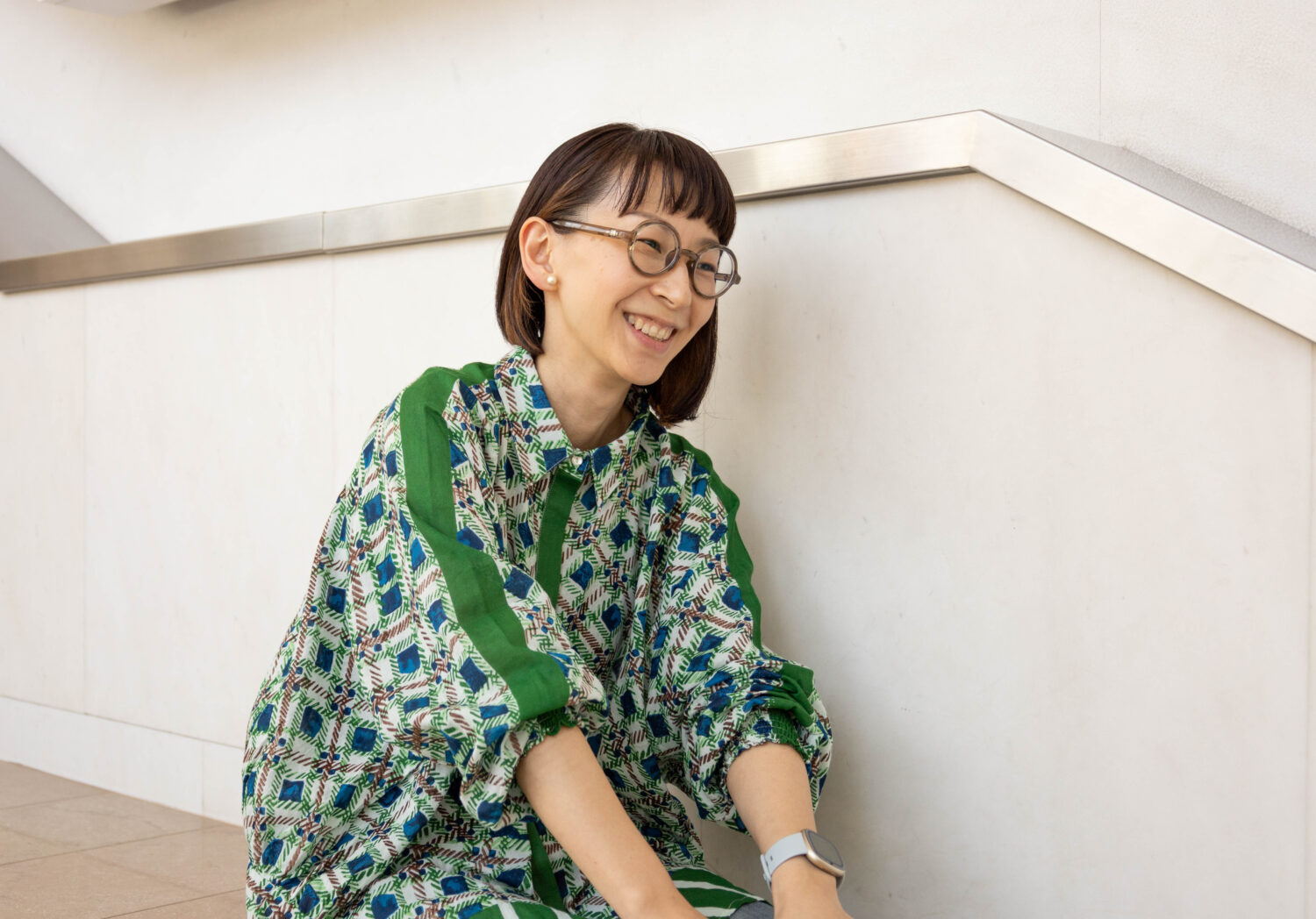
Once I started university, I realized that research wasn’t a perfect fit for me. I loved books and art history, but I wasn’t driven to write academic papers. What interested me more was design theory–analyzing the perspectives and composition of paintings. I was drawn to the idea of closely examining images, so I wrote my thesis using that approach. Around that time, a professor introduced me to a book by Amelia Arenas, where I first learned about the concept of Dialogue-based Visual Thinking. I still vividly remember thinking, “This is exactly what I want to do!”
But as I neared graduation, I struggled to find a job related to Dialogue-based Visual Thinking. I wanted to work in the art field in some way, so I spent time doing various part-time jobs at museums, hoping to work in something related to art. At that time, I heard that the Tobira Project for art communicators would be starting at Tokyo Metropolitan Art Museum. When I visited for information, Mr. Tatsuya Ito and Ms. Sawako Inaniwa talked about a method called Dialogue-based Visual Thinking, and how the Tobira art communicators would connect people through art and art appreciation. I felt that they had verbalized what had been on my mind. I immediately applied: I thought “I have no choice other than becoming a Tobira!” Unfortunately, I failed the first round of selections, but managed to become a Tobira at the second application. I really enjoyed Dialogue-based Visual Thinking. I felt that I had finally made my long-held dream come true.
Alongside my work as a Tobira, I started working as a coordinator at the NPO Arts Resource Development Association (ARDA). I was involved in various projects centered around Dialogue-based Visual Thinking including the “Mitehanasou” (Look and Talk) project at Sakura City Museum of Art as a coordinator for outreach activities at elementary schools in Suginami Ward, and interactive music appreciation projects at Suntory Hall.

After that, I set up the General Incorporated Association “Appreciate Approach” (“Appp”) with people who I got to know through the Tobira Project. Since 2023, I’ve been working full-time on “Koto! Koto? Kawasaki,” so Appp is currently on hold. However, up until then, we had been organizing Dialogue-based Visual Thinking programs and coordinating projects related to art communication.
Editor Your childhood interest in welcoming people into spaces with art naturally evolved into your passion for Dialogue-based Visual Thinking. How about you, Mr. Tamaoki?
Tamaoki Like Ms. Kondo, I also loved making things. When I was young, I spent a lot of time with my grandfather, who ran a photography studio. He was someone who made things himself, so I think that influenced me.
That’s why I was interested in creative work. As a teenager, I loved films, so after high school, I went to a vocational school to become a film director. I actually directed a film once, but filmmaking didn’t suit me. My friends even skipped their part-time jobs to help me, but I failed. After that, I thought, “I’m no good,” and I couldn’t bring myself to make another film.
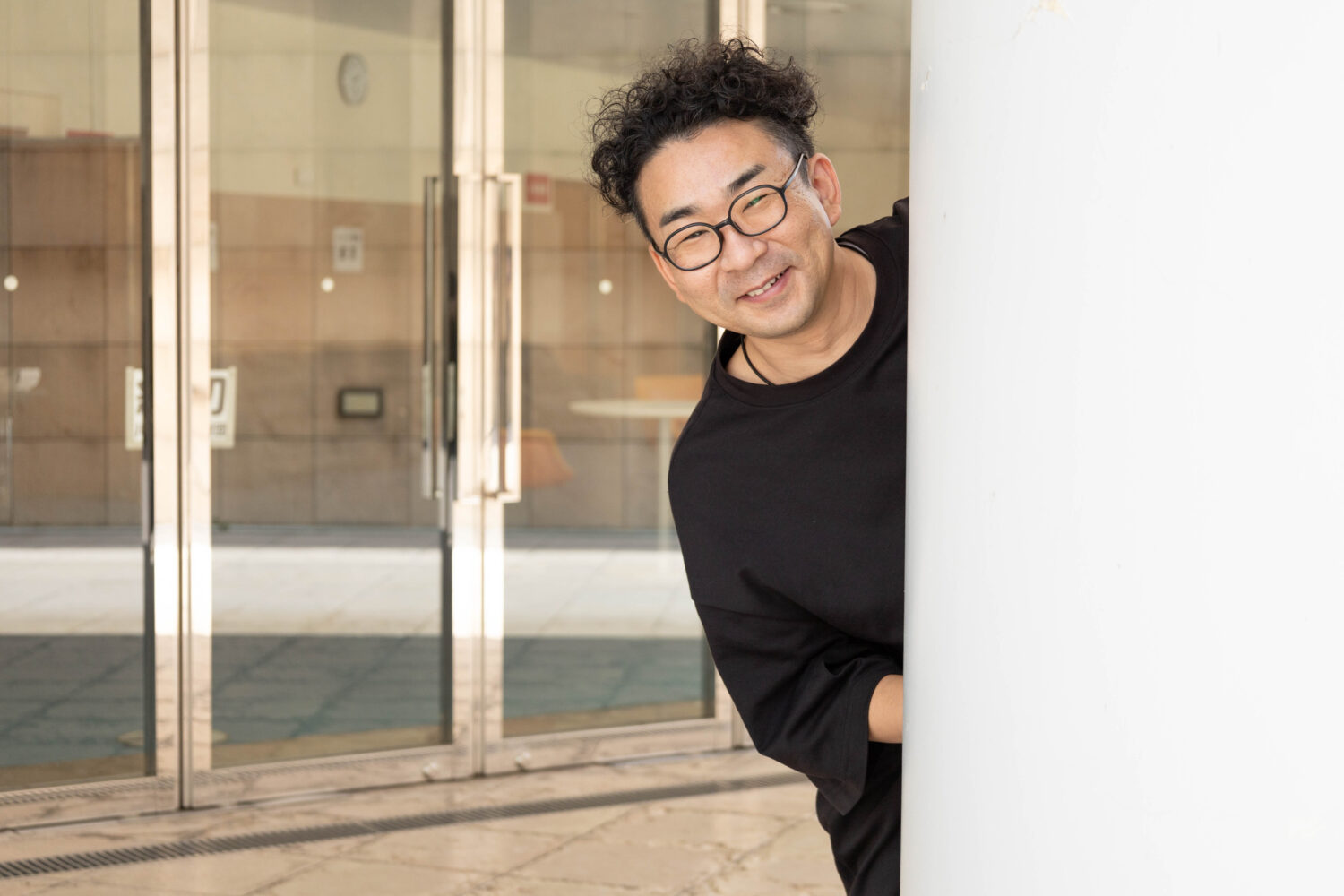
After giving up on becoming a director, I worked as a part-time DTP operator, but working with flat images didn’t feel fulfilling. I started to think, “Maybe working with three-dimensional objects would be more interesting.” That’s when I discovered a woodworking class held twice a week in Tokyo and decided to attend.
I ended up going for a year and a half, made great friends, and eventually co-founded a shared woodworking studio in Yokohama. We specialized in making furniture using traditional kumite joinery techniques without screws or nails. But making a living from woodworking alone was tough. Just when I was wondering what to do next, I attended a talk by artist and current president of Tokyo University of the Arts, Katsuhiko Hibino.
After the talk, I handed him my business card, and he said, “Oh! You do woodworking?” It turned out that he was looking for someone with woodworking skills for his art project at the time. That’s how I started helping him.
For me, that was my entry into the art world. After working with Dr. Hibino on projects in Gifu Prefecture, I returned to Tokyo and started working at the now-closed art center “3331 Arts Chiyoda” (commonly known as 3331). I worked there for eight years, doing not just construction work but also public relations and coordination.
Working at 3331 made me reflect on the question, “What is art?” That’s also when I joined the Tobira Project at the Tokyo Metropolitan Art Museum, where I met Ms. Kondo.
I’m not an artist or an expert. Art can sometimes seem intimidating. But through my work with Dr. Hibino and at 3331, I also saw its potential and excitement. The more I thought about it, the more I came to believe that art and society should gradually find ways to come closer together.
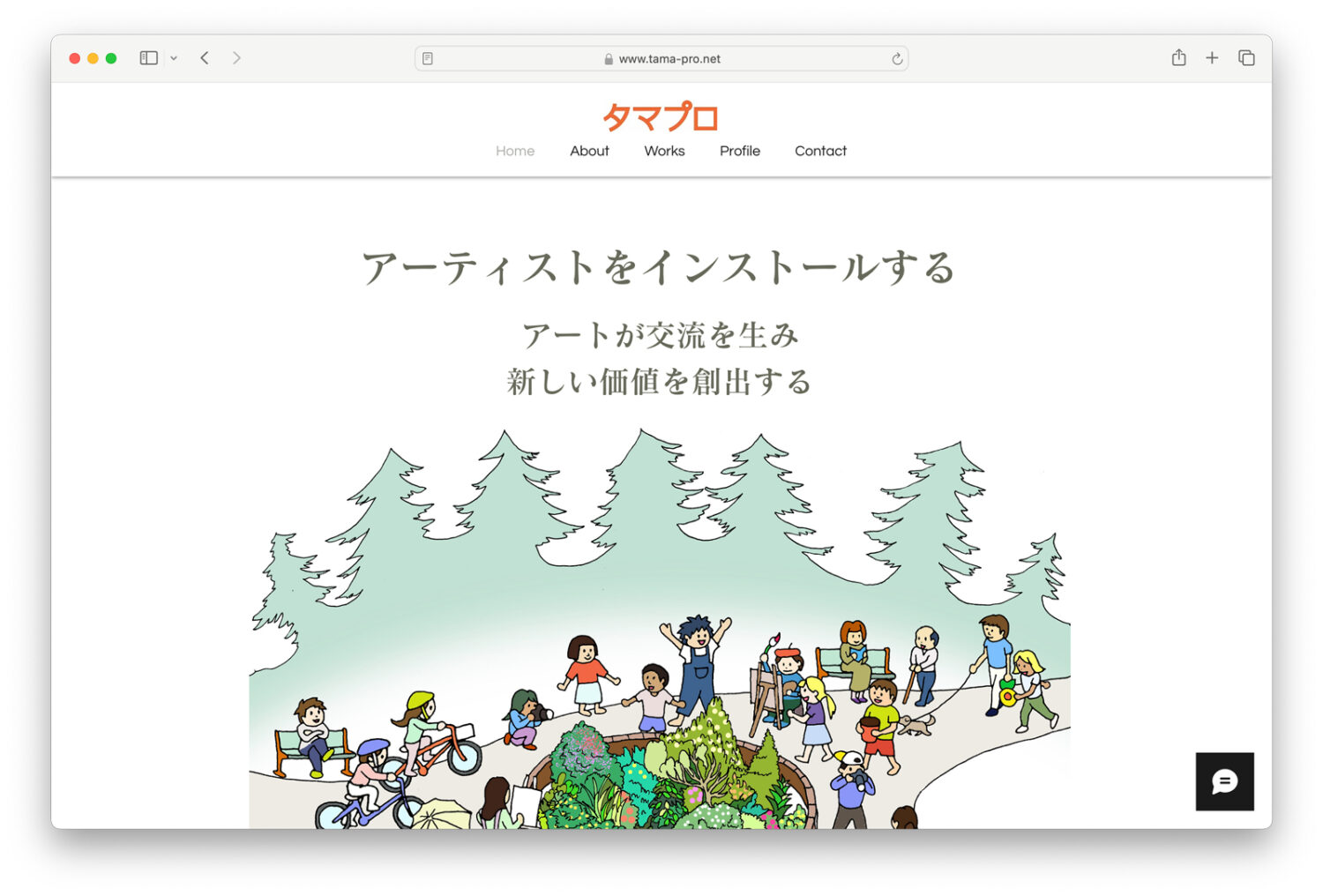
So, together with artists I met at 3331, I established an independent company called “Tamaoki Production LLC” (“Tama Pro”). At Tama Pro, we plan and manage workshops and art projects with the perspective of “installing” artists—who possess flexible thinking and diverse values—into society. Right now, I’m quite busy with “Koto! Koto? Kawasaki,” but I still make an effort to accept requests from artists who have supported me in the past.
Editor It sounds like your encounter with Dr. Hibino led to an expansion of your activities into art, which naturally connected to your desire to bridge art, artists, and society. How about you, Mr. Takarada? I heard that you are also an artist yourself…?
Takarada Yes, I make paintings. I have loved painting since I was a child. When I was a high school student, a devoted art teacher encouraged me, so I naturally wanted to go to an art university. Though, to be honest, the difficulty of the entrance exams was a bit unexpected! (laughs) In the end, I enrolled at Tohoku University of Art & Design (TUAD).
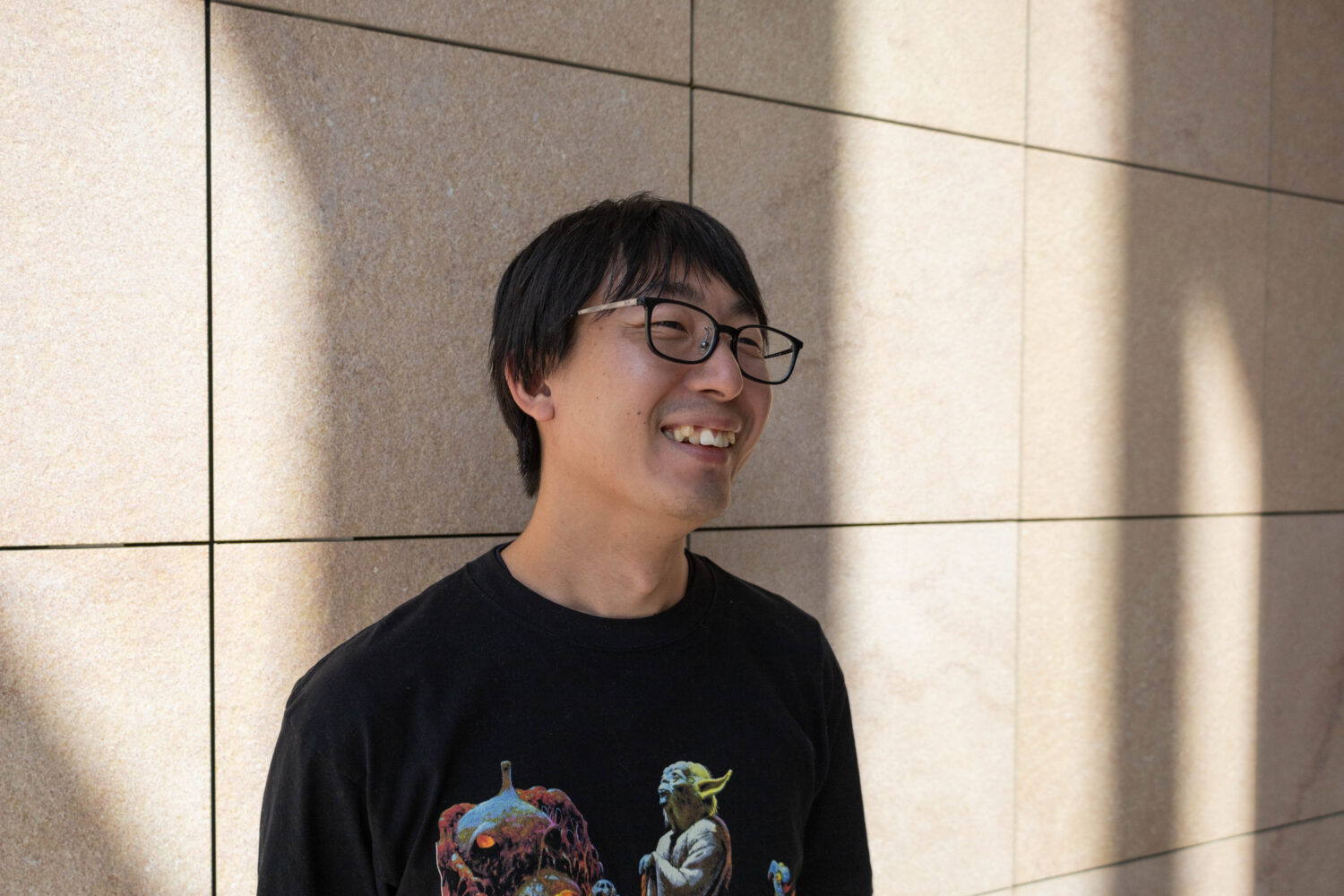
The environment of Yamagata and the culture of the university suited me well. I found joy in painting, was fortunate to meet great friends, and I came to believe that I had no choice but to live as a painter. Wanting to paint more and be closer to art, I continued on to graduate school.
However, there was one problem.
When I decided to pursue graduate studies, I told my parents and family, “I’m going to become an art teacher.” Of course, I did obtain a specialized teaching license, but ultimately, painting became my main focus. Gradually, a sense of doubt began to emerge within my family, wondering what I was doing with my life.
Feeling this wasn’t good, I started submitting my work to competitions, hoping that establishing a track record would change their perception. Fortunately, just before completing my graduate studies, I won a grand prize. At the award ceremony, the head judge, Mr. Kunio Motoe, made a remark that seemed to make my father finally understand: “My son will live by painting.” Of course, even with the award, I couldn’t make a living solely from my art yet. However, my family began to understand that I was pursuing a path where I could balance painting with work.
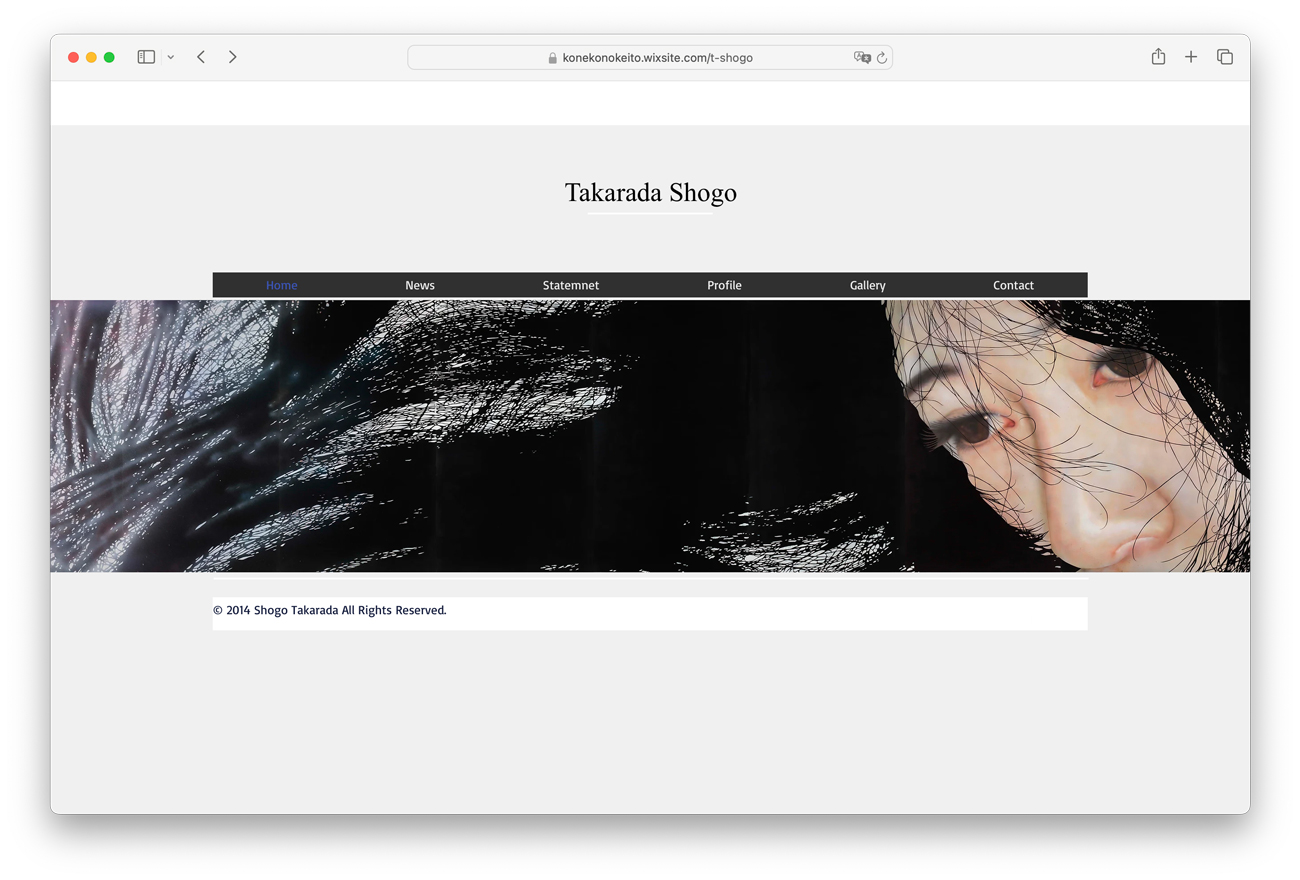
After graduate school, I worked at a company in Yamagata that a senior introduced me to. The company was involved in community development, and I was responsible for managing and running workshops at facilities similar to community centers. I had been surrounded by art and culture from a young age, but this job gave me the opportunity to discover the appeal of working directly with local communities and people. I worked there for several years, but unfortunately, the company had to close. I struggled with the decision, but by that time, I had already lived in Yamagata for about ten years, including my student years, so I decided it was a good opportunity to move on.
By chance, I came across a job opening at Nagaoka Institute of Design in Niigata, applied, and was fortunate enough to be hired. So, from 2020, I started working there as an academic assistant in the Department of Architecture and Environmental Design. “Koto! Koto? Kawasaki” was launched in 2023 by Ms. Kondo and Mr. Tamaoki, but at that time, I was still in Nagaoka. After finishing my work there, I joined them in the spring of 2024.
Editor Ms. Kondo has created places for interactive viewing; Mr. Tamaoki has connected communities and society and arts; and Mr. Takarada has his own art practice. Each of you has a unique story about the connection between art and society. How did you all come to be involved in the “Koto! Koto? Kawasaki” project?
Kondo I was first out of three of us. I supported interactive viewing programs during the startup period of “Arts-based Communication Platform for Co-Creation to Build a Convivial Society” that operates “Koto! Koto? Kawasaki” and “aa-tomo.” I was recruited at that time.
Maybe it was partly because I lived in Kawasaki City. Though I had been involved in many interactive viewing and art communicator projects in various places, I did not live near any of them. I accepted the role so that I could contribute to the city where I lived for the first time. Then, I recruited Mr. Tamaoki, with whom I had worked as a Tobira, to work with me on the project.
Tamaoki When I heard about “Koto! Koto? Kawasaki,” I was really drawn to the idea of art communicators starting something within the city. It felt like a project that connected to my own interests in considering the potential of art within society.
Editor The first year of FY2023 was the preparatory phase for launching “Koto! Koto? Kawasaki” in 2024. How did you go about the preparations?
Tamaoki and Kondo We started from zero! (laughs)
Kondo We attended Tobira Project lectures with Kawasaki City officials to establish a shared understanding of the project. As our vision became clearer, we had to create a detailed plan and schedule, which was quite challenging. We decided on the project name, defined its structure, organized a forum, and recruited our “Kotora” (art communicators). It was a very busy year.
Takarada I was still in Nagaoka City in Niigata at that time…(laughs)
Kondo We knew that once the project started, things would get even busier, and since last year, we had been talking about bringing in one more person. Mr. Takarada joining us was a huge help.
Tamaoki During the preparation phase, we also solidified the three key pillars of the project: “City & People,” “Art Appreciation,” and “Care.” When we held a forum and opened applications for Kotora, we received over 170 applications—5.7 times the available spots. Now, with the project officially launched, we are working with the 40 selected participants. I oversee “Community & People,” Ms. Kondo handles “Art Appreciation,” and Mr. Takarada leads “Care.”
aa-tomo From the perspective of “cultural prescriptions” as a solution for loneliness and isolation, the three pillars—art appreciation, focusing on Kawasaki’s community, and engaging with medical and welfare fields—seem like a perfect combination.
With the project officially starting in April, how do you feel about it so far, and what are your hopes for the future?
Tamaoki As a part of our “City and People” activities, we recently held a second meeting. During the meeting, I asked the Kotora to think about “local cultural art resources” from their perspectives. They raised many different ideas. They said that it’s not just art galleries or museums, but also local parks, restaurants, and cafes that are important cultural art resources for us. It is a unique viewpoint coming from the local activity in Kawasaki City. I’ve always thought about how to connect art and culture to communities, but seeing the fresh ideas from Kotora, I feel there’s so much potential. I’m excited to see how things develop.
Takarada What stands out to me is how dynamic the Kotora are. They each have their own strengths but are also eager to explore unfamiliar areas. As I lead “Care”, I have to admit that I don’t know everything about the medical and welfare fields, but learning together with these enthusiastic participants has been fascinating. I want to keep evolving while expanding our activities.
Kondo Miraculous moments often happen in art-based communication spaces. A Kotora once said, “It feels like a miracle, but with all of us gathered here, maybe miracles are inevitable.” That’s true, but I also think it’s more than that. For miracles to happen, the right foundation is essential. Leading this project has made me realize that. Through “Koto! Koto? Kawasaki,” I want to create countless moments that enrich people’s lives. My goal is to build an environment where the Kotora can thrive.
Tamaoki There are precedents like the Tobira Project, which we also have experience being involved in. Of course, that experience can be useful. But I don’t think that alone is enough. In Kawasaki, together with the Kotora, we need to think about what kind of new stories we can weave. For that, we ourselves need to genuinely find this project, as well as Kawasaki’s town and culture, interesting. By putting that into words and communicating it, the enthusiasm will spread, creating the groundwork for activities to emerge. In that sense, I hope we can enjoy running this project.
aa-tomo We’re looking forward to seeing how “Koto! Koto? Kawasaki” evolves. Thank you very much for joining us today!
